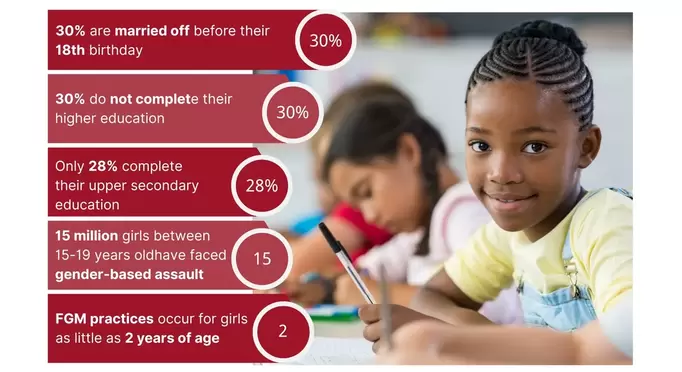Educating girls is crucial for individual empowerment and societal progress. It unlocks a girl's potential, improves family well-being, and contributes to a country's economic and social development. Globally, billions are lost annually due to limited educational opportunities for girls, highlighting the need for increased investment and access to quality education.
Here's a more detailed look at the importance of girls' education:
Empowerment and Personal Growth:
Unlocks Potential:
Education empowers girls to make informed decisions about their lives, pursue their interests, and reach their full potential.
Challenging Gender Norms:
Access to quality education challenges harmful gender stereotypes and discrimination, paving the way for greater equality.
Increased Agency:
Education equips girls with the knowledge and skills to participate fully in society, politics, and the economy, giving them a greater voice and role in their communities.
Benefits for Families and Communities:
Improved Family Health and Well-being:
Educated women are more likely to have healthier children, seek better healthcare, and make informed choices about family planning, leading to improved family health and well-being.
Reduced Poverty and Inequality:
Education enables women to enter the workforce, earn higher incomes, and contribute to household incomes, reducing poverty and improving living standards.
Enhanced Social Progress:
Educated women are more likely to participate in civic activities, advocate for their rights, and contribute to positive social change.
Economic and Societal Impact:
Economic Growth:
An educated female workforce is a powerful driver of economic growth and innovation.
Reduced Inequality:
Investing in girls' education is a crucial step towards achieving gender equality and building a more just and equitable society.
Sustainable Development:
Education plays a vital role in addressing global challenges like poverty, inequality, and climate change, contributing to sustainable development.
Challenges and Barriers:
Poverty:
Poor families may prioritize educating sons over daughters, leading to unequal access to education.
Social and Cultural Norms:
Traditional beliefs and practices can limit girls' access to education, particularly in certain regions.
Violence and Discrimination:
Gender-based violence and discrimination can deter girls from attending school and pursuing higher education.
Lack of Resources:
Insufficient resources, including qualified teachers and educational materials, can hinder access t
o quality education for girls.

